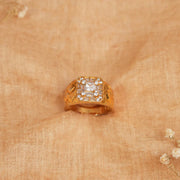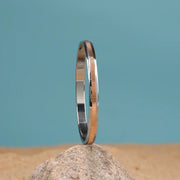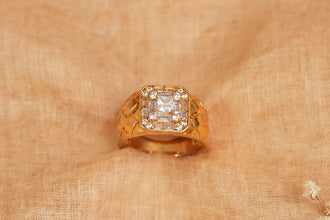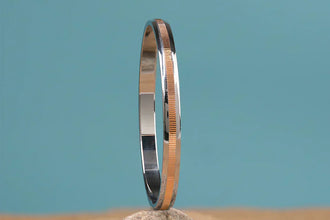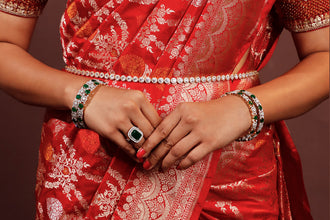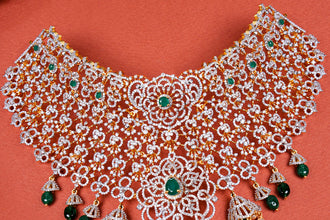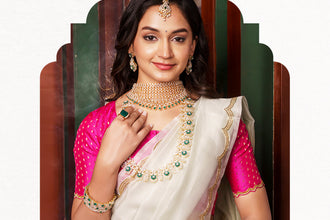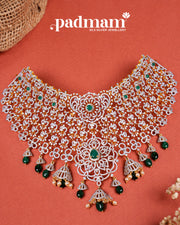
Silver has held an enduring place in jewellery design for centuries, admired for its luminous beauty, flexibility, and compatibility with virtually any style. Silver is a classic go-to fashion choice that everyone loves to incorporate into their everyday attire or on special occasions, in the form of a delicate band, a bold cuff, or even an heirloom handed down through generations.
There are, however, two confusing terms: sterling silver and 925 silver. They are synonymous, and is there a difference?
An informed customer is a confident customer, at Padmam, where craftsmanship and authenticity meet. This guide will bring the terminology out of the closet, discuss purity standards, and offer wise words for identifying honest and high-quality silver.
What Does 925 Silver Mean in Jewellery?
The “925” mark refers to the purity of the silver. Jewellery stamped with 925 contains 92.5% pure silver and 7.5% other metals, usually copper.
Pure silver (99.9%) is beautiful but too soft for everyday jewellery, bending and scratching easily. By blending it with a small percentage of another metal, jewellers create a far stronger alloy while retaining silver’s signature shine.
This 92.5% purity standard is the benchmark for premium-quality silver jewellery worldwide.
What is Sterling Silver?
In simple terms, sterling silver is the name given to the alloy that contains 92.5% silver and 7.5% other metals.
-
Sterling silver is the official industry name for alloys.
-
925 silver – the purity mark stamped on the piece.
They refer to the same high-quality metal; the difference lies in the terminology.
Sterling silver Composition
The most popular blend is:
92.5 per cent silver
7.5 per cent copper (occasionally with zinc, platinum or germanium imported to withstand tarnishing).
The metal used mainly as an alloying metal is copper, as it is hard to break, easily found, and does not interfere with the bright white lustre of silver.
Advantages of alloying are:
-
Strength – perfect for rings, chains, and bracelets that get regular wear.
-
Scratch resistance – withstands daily use without excessive wear.
-
Workability – allows for intricate and detailed jewellery designs.
Hallmarks: The Significance of Hallmarks
A hallmark is a minor yet significant indication of genuineness. Actual sterling silver is usually stamped with one of the following:
-
925/or 925
-
Sterling or Sterling Silver
They are usually understated on clasps, the inside of a ring band, or the underside of a pendant. In other countries, you may find a maker's mark or an assay office mark, assuring quality.
Sterling Silver vs. 925 Silver: What is the Difference?
In other words:
-
Sterling silver = the silver alloy.
-
Hallmark -The mark of purity (925 silver).
Consider it as gold: The purity grade is marked as the so-called 18k, and the type of alloy is marked as yellow gold or white gold.
The Methods of Recognising Viable 925 Silver
Most of these sterling silver items are usually imitated. This is how to check authenticity:
-
Look for the hallmark – 925 or Sterling. The absence of a stamp can be a red flag (although antiques or handmade items may be exceptions).
-
Perform the magnet test – silver is not magnetic; attraction to a magnet usually indicates the presence of base metals.
-
Check for tarnish – genuine sterling silver develops a natural patina over time due to copper content; this can be polished away. Fakes often don’t tarnish at all or tarnish unevenly.
-
Seek professional testing – a reputable jeweller can verify purity using acid or XRF tests.
Why Sterling Silver is Loved Worldwide
Sterling silver remains a favourite in designing fine jewellery due to the following reasons:
-
Affordability: This is cheaper than gold and platinum, yet it qualifies as a precious metal.
-
Functionality – can be used across minimalist and statement designs.
-
Durability - given proper care, it can last for decades.
-
Classic Quality- ever-stylish.
Sterling silver is versatile, meaning it is a collection essential, whether it is a simple everyday ring or something as traditional as an heirloom.
Look After Your Sterling Silver Jewellery
Even the high-quality silver can be treated to:
-
The pieces should be stored in an airtight pouch to avoid tarnish.
-
Avoid some water, perfume and rough chemicals.
-
Clean with a special silver cloth.
-
For hard, stubborn tarnish, a little soapy water and a soft brush.
When taken care of, sterling silver develops a classy patina over time, a sign of authenticity.
Common Myths About Sterling Silver
Myth 1: Sterling silver isn’t “real” silver.
Truth: It’s 92.5% pure silver — very much the real thing.
Myth 2: It’s too delicate for daily wear.
Truth: The alloy is designed for durability and everyday use.
Myth 3: 925 silver and sterling silver are different.
Truth: They are the same; the difference is in name only.
Final Thoughts from Padmam
There's no secret here, as far as sterling silver and 925 silver are concerned; they are the same precious alloy, which is adored because it is rich, durable, and eternally beautiful.
This legacy is imbued in every one of our creations, bearing the stamp of originality and designed sustainability at Padmam. So the next time you spy that little unobtrusive 925 stamp, seen on jewels, consider it not only a figure, but an assurance of quality, craftsmanship and long-time loveliness.
FAQ
1. What does 925 mean in jewellery?
This means that the item is 92.5% pure silver alloyed with 7.5% other metals, usually copper, which is the definition of sterling silver.
2. How can I be sure my silver jewellery is genuine?
Look for a hallmark, check its reaction to a magnet, observe tarnish patterns, or have it tested professionally.
3. Is sterling silver hypoallergenic?
Yes, especially when alloyed with copper rather than nickel. Always confirm the alloy composition if you have sensitive skin.
4. Which is better for jewellery — pure silver or sterling silver?
Sterling silver is better suited for everyday wear as it’s stronger and more damage-resistant.


